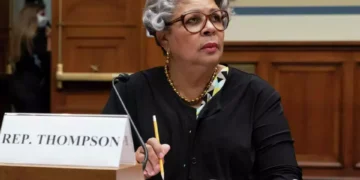Feb 25, 2025 Story by: Editor
Oberlin Village, located within Raleigh’s Historic Landmarks (RHL) and designated as a Historic Overlay District (HOD), stands as the most intact and longest-surviving Reconstruction-era freedmen’s colony in both Wake County and North Carolina.
Period of Significance: 1873-1970
Founded after Emancipation, Oberlin began as a freedman’s settlement. Oral history suggests that while some Black residents acquired land from white owners in the 1860s, others received land from families that had formerly enslaved them. Though home construction may not have started until the 1870s, by 1880, about 150 Black families resided in the area. Men commonly worked as farmers, blacksmiths, carpenters, shoemakers, masons, and tinners. Some also served as ministers or held political positions. Women found employment as domestic workers, farm laborers, cooks, laundresses, and seamstresses.
The central hub of Oberlin Village was situated along present-day Oberlin Road, spanning from Mayview Road to Bedford Avenue. This area housed essential community establishments, including churches, shops, and notable residences. Established in 1873, Wilson Temple United Methodist Church originally occupied a frame sanctuary before being replaced in 1911 by a Gothic Revival-style building. Among the early residents, Rev. Plummer T. Hall preached at an Oberlin church, which later became known as Hall’s Chapel and then Oberlin Baptist Church. He also gifted his wife, Delia, the Queen Anne-style Plummer T. Hall House.
Oberlin Road is home to several historically significant two-story residences, which were uncommon for Black homeowners in the late 19th and early 20th centuries. These include the ca. 1890 Willis Graves House, ca. 1900 James S. Morgan House, and the ca. 1910 front addition to the John and Mary Turner House. The size of these homes reflected the affluence of their owners. While Graves and Turner operated grocery stores, they also pursued additional business ventures—Graves in masonry and carpentry and Turner in shoe retail along Raleigh’s Hargett Street, a thriving Black business district. Morgan, meanwhile, was the son of Wilson W. Morgan, a prominent Reconstruction-era politician and one of the founders of the Colored Educational Association of North Carolina.
The village mainly expanded southwest of Oberlin Road, forming a street grid around Bedford and Van Dyke Avenues. In the early 20th century, single-story, pyramidal-roof cottages were prevalent, followed by modest bungalows in the 1920s. As Oberlin was incorporated into Raleigh, the architectural styles evolved, with some homes featuring Tudor Revival elements such as gable wings and façade chimneys. Cape Cod and Colonial Revival-style houses became more common after World War II.
Oberlin Cemetery, established in 1873, is believed to have been built over a former slave graveyard, as suggested by oral tradition. The cemetery maintains a rural aesthetic, with gravestones varying from elaborately carved marble and granite obelisks to unmarked stone markers. Military-issued headstones for veterans are also present. The oldest dated inscription in the cemetery marks a burial from 1876.
Like Method, another freedman’s village later annexed by Raleigh, Oberlin Village plays a crucial role in the history of Black settlement and homeownership in the city.
Source: Raleigh Historic

















